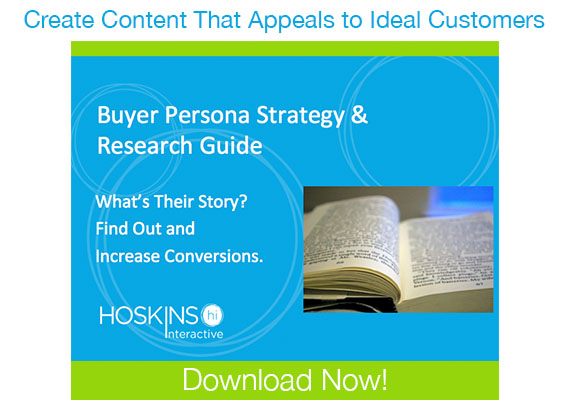Hoskins Interactive Media & Marketing Blog
Current Articles Rss FeedWhy Google’s Hummingbird Update Frees Marketers
Posted bywpbizFri, Oct 4, 2013 @ 12:58 pm
It was like the shot heard ‘round the world. Last week’s reveal of the Hummingbird algorithm “overhaul” left many marketers crying in their coffee:keyword information is being held captive, so we can’t see who searched what to find us, and Google is not looking at keywords anymore—it is assessing what the user wants to find out. It’s about the concept, the context of the search. Not necessarily the words being used.
Confused? No one explains this better than HubSpot, so here’s how they describe the algorithm change and what it means for you, as a marketer or small business owner.
Now, many marketers—especially those who have built their kingdoms on search engine optimization—are freaking out. We love data and a tidy world where we can see which keywords are a good buy: not competitive but are searched at a high volume. We use this information to become more visible online; this is how we create content and attract website visitors.
But I’ve got to be honest. I jumped for joy when I heard the news. Probably because I think like a journalist.
Keyword Research Doesn’t Reveal What Prospective Customers Search
Here’s the thing about keywords: they’re clunky. Relying on keywords was tricky business:
- A good phrase didn’t necessarily produce desired results.
- A convoluted long-tail (multi-word, descriptive) phrase could could cause confusion and turn people off. Your content doesn’t have much time to make an impression, so clarity is critical.
- A longtail keyword phrase may describe the product, service or idea being promoted, but would someone actually type those words into Google?
Simple language is easier to read, easier to understand.
Here’s another thing about keywords: you could find out which phrases were being searched. But you wouldn’t know who was searching for them. Were you really attracting the right audience to your website? Focusing on keywords made that difficult to discern.
All of the data in the world won’t help you understand the motivation behind the search. This is about understanding your audience and delivering information they need.
Hummingbird is good news: now we just have to know the motivation behind the search. What are people really trying to find out?
Let me give you an example. It’s likely that a natural supplement manufacturer will get more website traffic with content that describes “how to fall asleep faster, naturally” rather than “melatonin sleep aids.” Google is more interested in why people are searching for melatonin. Most likely, these people want to know fall asleep faster, naturally.
How Do You Safeguard Website Traffic?
To get found online, you need to understand what ideal customers/clients are searching for and where they are at in the decision-making process. What problems are they trying to solve? What options are they considering? What information can you provide that helps them decide to buy?
Publishing and promoting content is still the best way to get more website traffic. But now your content must be very customer-centric. Know who your audience is, write for them. Get started by understandingbuyer personas and the customer buying cycle.
The data that shows whether you’re on the right track will come. But you’ll already know this—and your website traffic will prove it—if you have been talking to sales reps, prospects, customers, etc. Think more conceptually about the problems your products and services solve. Learn everything about the people you want to do business with. Talk to them in your content. Provide answers to their questions in their words.
You may be grateful for Hummingbird and the renewed customer focus it’s brought to marketing.
______________________________________________________________________________
Terra Hoskins helps small and midsize businesses use their Web presence to grow; she coaches and consults on inbound strategies so that clients reach business goals, increase sales and share information effectively. She tweets at @terrahoskins.

